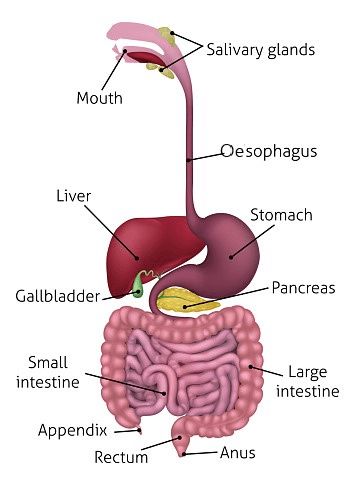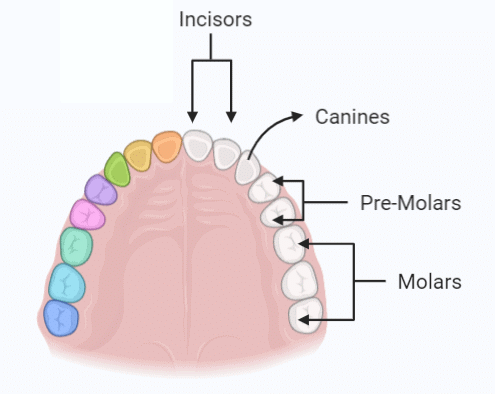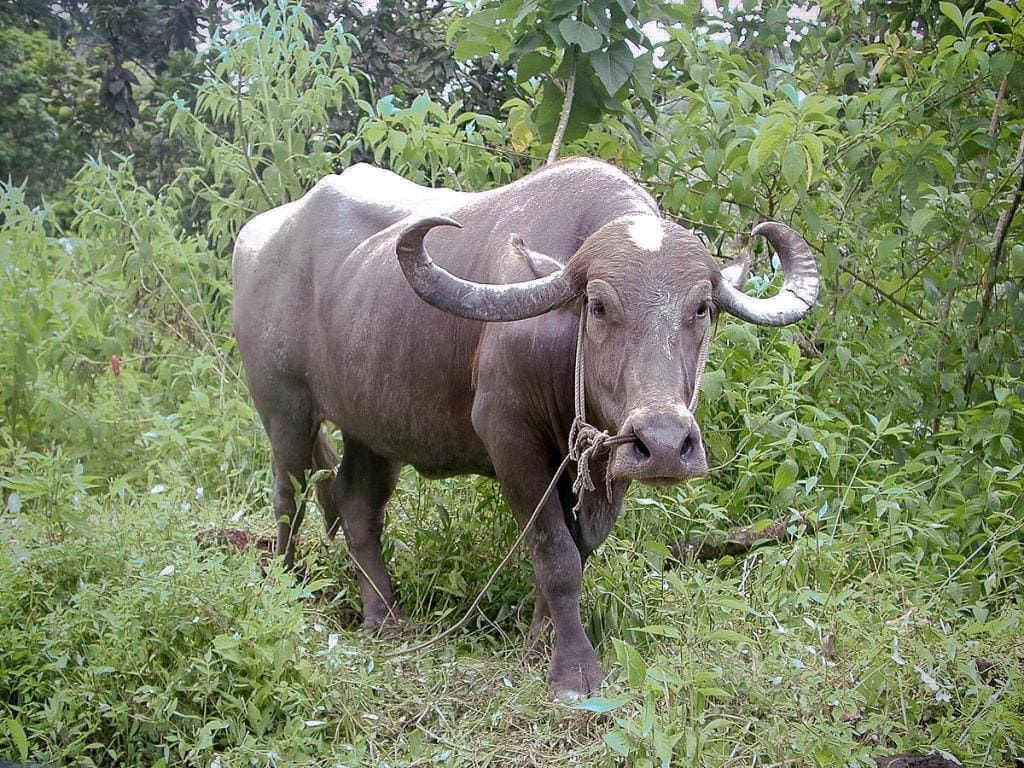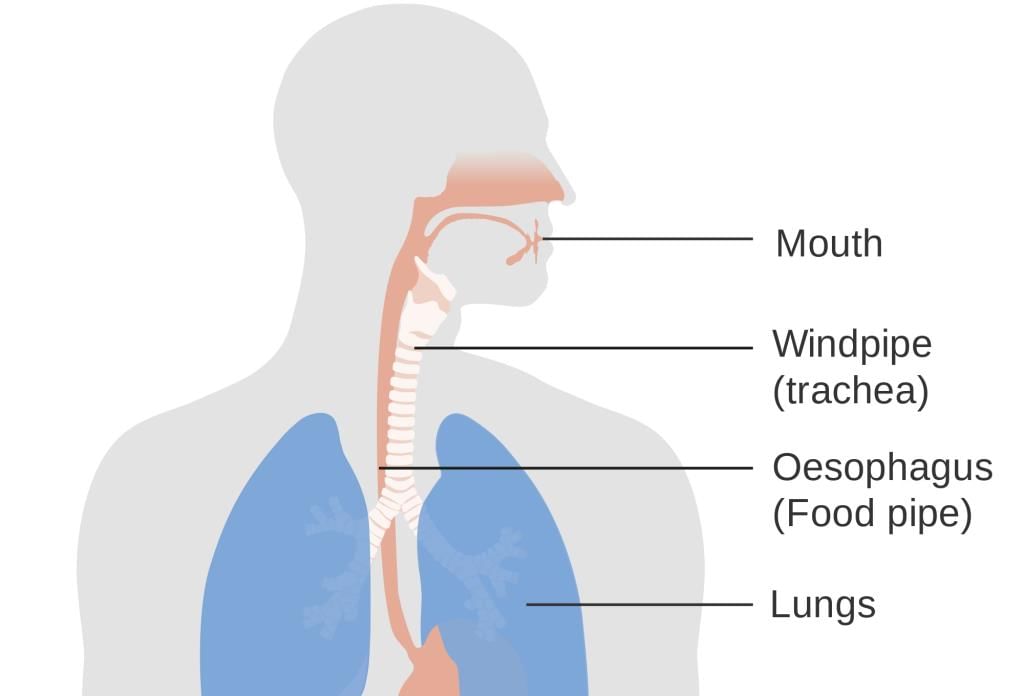Class 7 Science Chapter 2 Question Answers - Nutrition in Animals
Q1: Name the largest gland in the human body.
Ans: Liver
Q2: Animal nutrition includes
a. Nutrient requirements
b. Mode of intake of food
c. Utilization of food in the body
d. All of the above.
Ans: All of the above
Q3: Define digestion.
Ans: The process of breaking down complex substances of food into simpler forms is called digestion.
Q4: Name the parts of the alimentary canal.
Ans: Buccal cavity, oesophagus, stomach, small intestine, large intestine, rectum and anus.
 Alimentary Canal
Alimentary Canal
Q5: Name the glands that secrete digestive juice__________________.
Ans: Salivary gland, pancreas and liver
Q6: The process of taking food into the body is called __________.
Ans: Ingestion
Q7: We chew food with ____________ and break it mechanically into small pieces.
Ans: Teeth
 Types of Teeth
Types of Teeth
Q8: Name the different types of teeth.
Ans: Incisor, canine, premolar and molar
Q9: The saliva breaks down starch into sugars. True/ False.
Ans: True
Q10: Kids of three years of age have _____________ teeth.
Ans: Milk
Q11: Name the type of food of the ant
Ans: Ant eats sugar, food particles
Q12: Name the type of food of mosquitoes.
Ans: Blood
Q13: Name the mode of feeding of ants and mosquitoes.
Ans: The feeding mode of ants is Chewing (they use mandibles to bite and chew), and the mode of feeding of mosquitoes is sucking.
Q14: Amoeba digests its food in the ________________.
Ans: Food vacuole.
Q15: The tongue helps in mixing food with saliva. True/ False.
Ans: True.
Q16: Name ruminants.
Ans: Grazing animals like cows, buffaloes, and deer.
 BuffaloQ17: Name the finger-like projection present in the inner wall of the small intestine
BuffaloQ17: Name the finger-like projection present in the inner wall of the small intestine
Ans: Villi
Q18: Name the organ responsible for removing undigested and unabsorbed residues from the human body.
Ans: Anus
Q19: Bile juice is stored in a sac called___________________
Ans: Gall bladder
Q20: Bile is responsible for the digestion of
a. Fat
b. Protein
c. Vitamins
d. Both a and b
e. None of these
Ans: Fat
Q21: What is the location of the pancreas?
Ans: The Pancreas is located just below the stomach.
Pancreas
Q22: The pancreatic juice acts on
a. Carbohydrates
b. Fats
c. Proteins
d. All of the above
Ans: All of the above.
Q23: Name the end products of carbohydrates.
Ans: Simple sugars such as glucose
Q24: Name the end products of fats.
Ans: Fatty acids
Q25: Name the end products of proteins.
Ans: Amino acids.
Q26: Large intestine receives digested and absorbed food. True/ False.
Ans: False
Q27: Define egestion.
Ans: The process of removal of faecal matter from the body through the anus is called egestion.
Q28: What are the causes of diarrhoea in human beings?
Ans: Infection, food poisoning, or indigestion.
Q29: What is the full form of ORS?
Ans: Oral Rehydration Solution
 Human
Human
Q30: How is food pushed down from mouth to stomach?
Ans: Food is pushed down by the movement of the wall of the food pipe.
Q31: Humans can digest cellulose. True/False.
Ans: False.
Q32: The digestion of cellulose takes place in ________________ present in all ruminants.
Ans: Rumen
Q33: Amoeba uses____________ for movement and capture of food.
Ans: Pseudopodia.
Q34: Name the part of the digestive canal involved in the absorption of food.
Ans: Small intestine
Q35: Name the part of the digestive canal involved in the complete digestion of food.
Ans: Small intestine
Q36: Name the part of the digestive canal that kills bacteria.
Ans: Stomach
Stomach
Q37: Name the part of the digestive canal involved in the formation of faeces.
Ans: Large intestine
Q38: Name the part of the digestive canal involved in chewing food.
Ans: Mouth or Buccal cavity
|
111 videos|286 docs|28 tests
|
FAQs on Class 7 Science Chapter 2 Question Answers - Nutrition in Animals
| 1. What is the role of nutrition in animals? |  |
| 2. How do animals obtain nutrients? |  |
| 3. What are the different types of nutrients required by animals? |  |
| 4. How does the digestive system of animals help in nutrition? |  |
| 5. Why is proper nutrition important for the health of animals? |  |






















